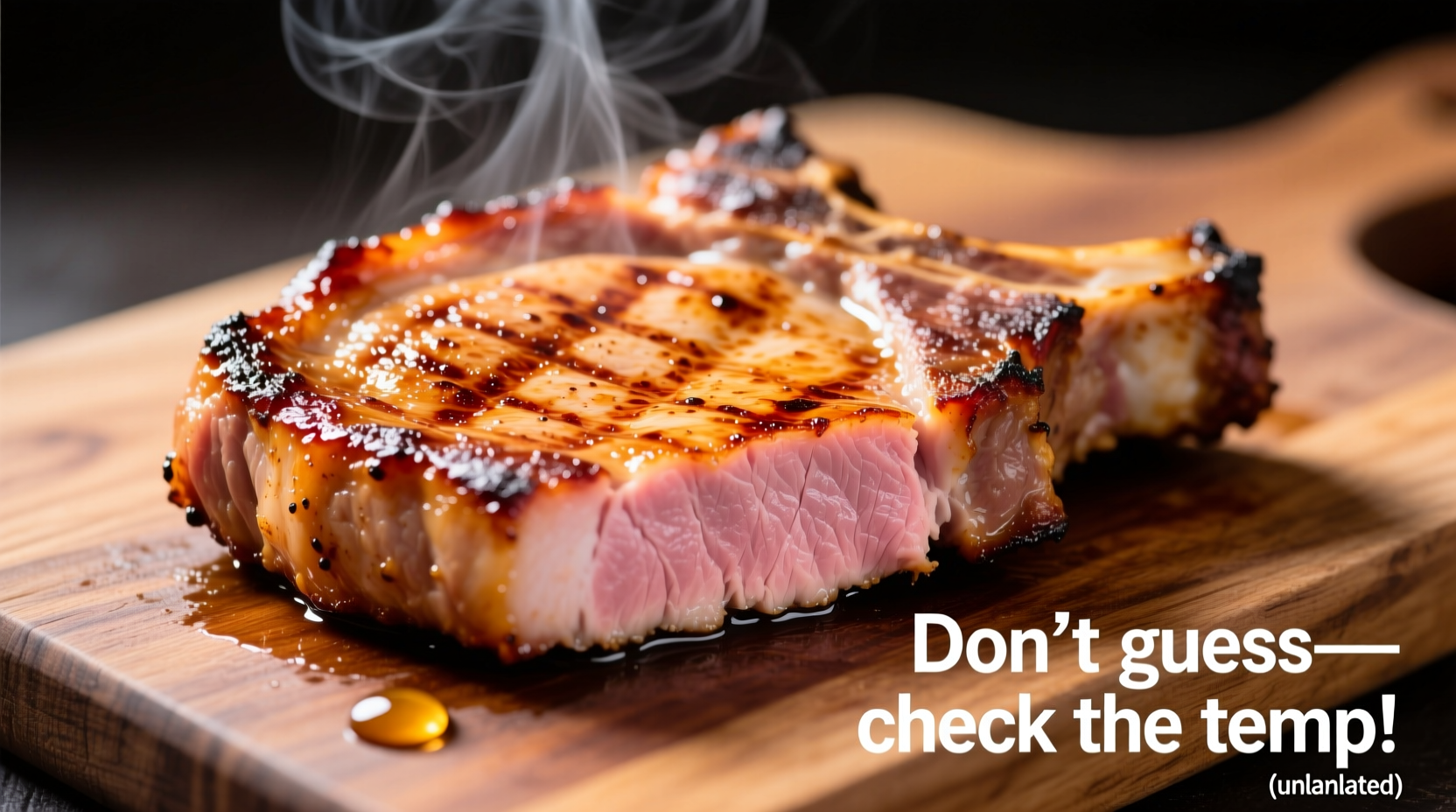Nothing ruins a beautifully marbled pork chop faster than overcooking or undercooking. Getting that perfect balance of safety and succulence requires understanding precise doneness indicators. Whether you're a weeknight dinner novice or a weekend grill master, mastering these techniques ensures restaurant-quality results every time.
Why Proper Pork Chop Temperature Matters
Modern pork production has virtually eliminated trichinosis concerns, allowing for safer medium-rare preparation. The USDA updated its guidelines in 2011, lowering the recommended temperature from 160°F to 145°F with a 3-minute rest. This change reflects improved farming practices and makes properly cooked pork noticeably more tender and flavorful.
| Doneness Level | Internal Temperature | Visual Indicators | Texture When Pressed |
|---|---|---|---|
| Raw | Below 120°F | Bright red, very soft | Very soft, leaves indentation |
| Rare | 120-125°F | Deep red center | Soft with slight springback |
| Medium Rare (Recommended) | 130-135°F | Pink center, clear juices | Firm with definite springback |
| Medium | 140-145°F | Slightly pink center | Firm with quick springback |
| Well Done | 160°F+ | No pink, opaque throughout | Very firm, no springback |
The Thermometer Method: Most Reliable Approach
Investing in an instant-read thermometer transforms pork chop cooking from guesswork to precision. The USDA Food Safety and Inspection Service confirms that 145°F with a 3-minute rest achieves both safety and optimal texture. Insert the thermometer into the thickest part of the chop, avoiding bone or fat pockets.
For best results, remove chops from heat when they reach 140°F–142°F—they'll continue cooking during the essential resting period. This carryover cooking accounts for the final 3°F–5°F temperature rise. The American Meat Science Association's cooking guidelines validate this approach for maximizing juiciness while ensuring safety.

Visual and Tactile Indicators for Thermometer-Free Cooking
When a thermometer isn't available, these secondary methods help determine doneness:
- Juice color test: Clear or faintly pink juices indicate proper cooking, while red juices mean more time is needed
- Texture comparison: Press the chop gently—medium doneness feels similar to the base of your thumb when touching index and middle fingers together
- Surface appearance: Properly cooked pork develops a golden-brown crust with no raw-looking areas
These visual methods work best with boneless chops of uniform thickness. Bone-in chops require extra attention as the bone affects heat distribution. The Culinary Institute of America's cooking techniques guide notes that visual indicators become less reliable with thicker cuts over 1.5 inches.
Avoiding Common Cooking Mistakes
Even experienced cooks make these critical errors:
- Skipping the rest period: Cutting immediately causes juices to escape, resulting in dry meat
- Over-relying on cooking time: Thickness, starting temperature, and cooking method dramatically affect timing
- Using high heat throughout: Start high for searing, then reduce heat to finish cooking without burning
For best results, bring chops to room temperature before cooking and use a two-stage cooking method—sear then finish at lower heat. This technique prevents the common problem of burnt exteriors with raw interiors.
Troubleshooting Doneness Issues
If undercooked: Return to heat and cook in 30-second intervals, checking temperature each time. Never microwave pork chops to finish cooking—it ruins texture.
If overcooked: Slice thinly against the grain and serve with a flavorful sauce. A simple pan sauce made from fond, broth, and a touch of cream can revive slightly dry chops.
Remember that carryover cooking continues during resting. This explains why chops that seem slightly underdone when removed from heat reach perfect doneness after resting—a phenomenon documented in the FDA Food Code's thermal processing guidelines.
Frequently Asked Questions
Is pink pork safe to eat? Yes, when cooked to 145°F with a 3-minute rest. The pink color comes from myoglobin, not blood, and doesn't indicate undercooking.
How long should pork chops rest after cooking? Minimum 3 minutes for chops under 1 inch thick, up to 5 minutes for thicker cuts. Resting allows juices to redistribute throughout the meat.
Can I use the same doneness indicators for grilled and pan-seared chops? Yes, but grilled chops may cook more unevenly due to flare-ups. Always check multiple spots on grilled chops.
Why do my pork chops always turn out dry? Overcooking is the primary culprit. Using a thermometer prevents this. Also, choose chops with good marbling and avoid excessive salting before cooking.











 浙公网安备
33010002000092号
浙公网安备
33010002000092号 浙B2-20120091-4
浙B2-20120091-4